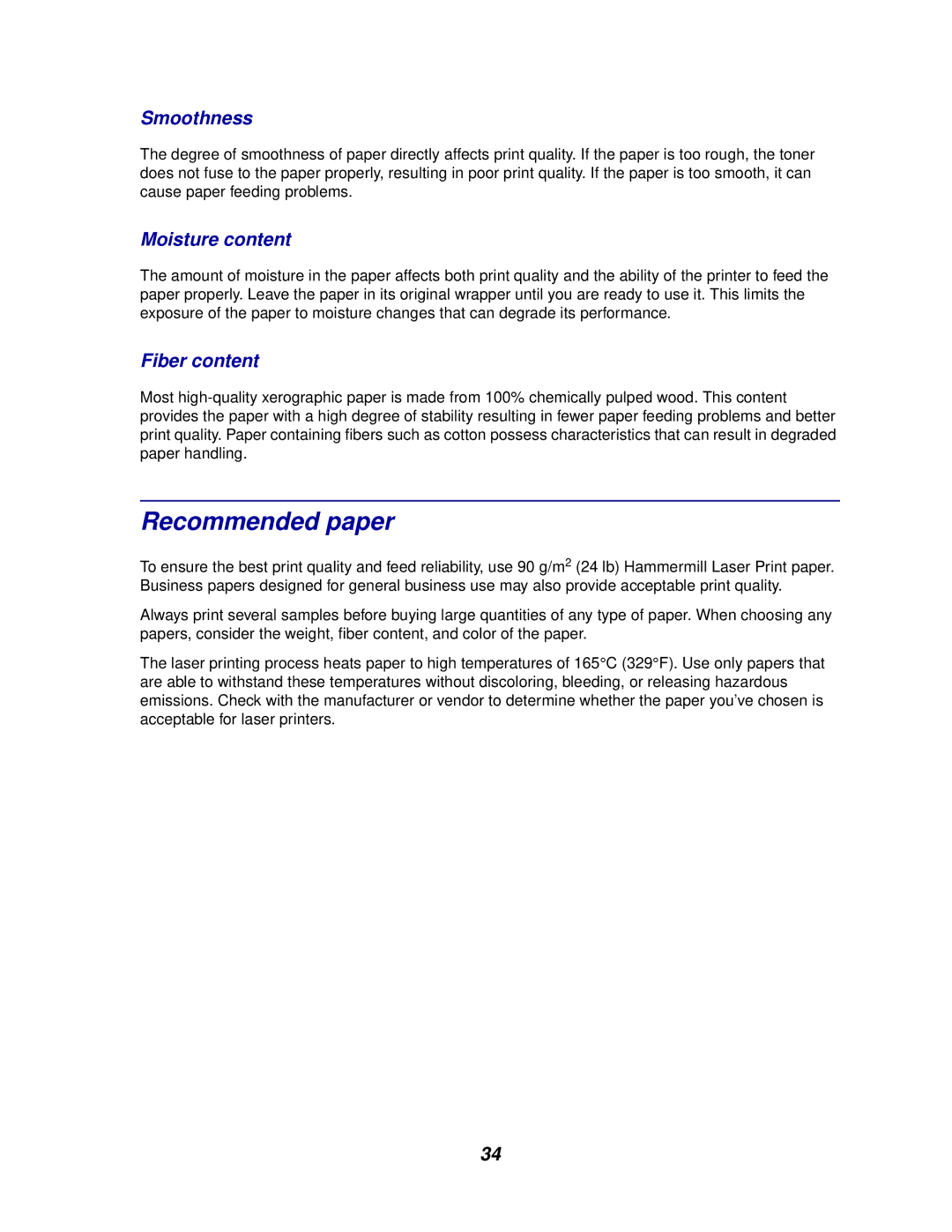Smoothness
The degree of smoothness of paper directly affects print quality. If the paper is too rough, the toner does not fuse to the paper properly, resulting in poor print quality. If the paper is too smooth, it can cause paper feeding problems.
Moisture content
The amount of moisture in the paper affects both print quality and the ability of the printer to feed the paper properly. Leave the paper in its original wrapper until you are ready to use it. This limits the exposure of the paper to moisture changes that can degrade its performance.
Fiber content
Most
Recommended paper
To ensure the best print quality and feed reliability, use 90 g/m2 (24 lb) Hammermill Laser Print paper. Business papers designed for general business use may also provide acceptable print quality.
Always print several samples before buying large quantities of any type of paper. When choosing any papers, consider the weight, fiber content, and color of the paper.
The laser printing process heats paper to high temperatures of 165°C (329°F). Use only papers that are able to withstand these temperatures without discoloring, bleeding, or releasing hazardous emissions. Check with the manufacturer or vendor to determine whether the paper you’ve chosen is acceptable for laser printers.
34
